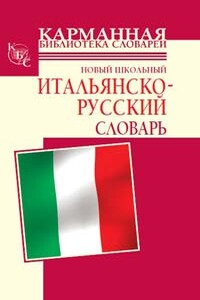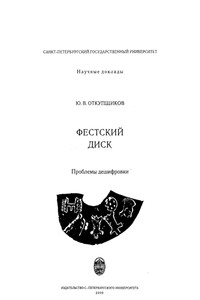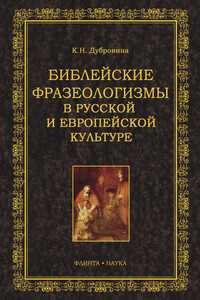40 лет Санкт-Петербургской типологической школе - [31]
Gonda [1940: 20If], in analyzing Malay/Indonesian onomatopoeic and sound-symbolic words with the iterative infixes — er- and — el-, proposes comparison of the latter with English and Dutch formations in, respectively, — er, — le and — eren, — elen.
Ever cautious with regard to the idea of onomatopoeia and sound symbolism, Gonda nevertheless arrives at the conclusion that the Malay/Indonesian — er-, -el- infixes are not grammatical morphemes — they are concomitant to imitating sound or movement, and their source (or at least one of their sources) may be a significant number of iconic words [ibid.].
In Sundanese, RL-formatives are an expression of the category of plurality — for verbs, adjectives, and sometimes nouns: dink «to sit (sg.)» — dariuk «to sit (pi.)», bodo «foolish (sg.)» — barodo «foolish (pi.)», budak «child» — barudak «children».
As I showed earlier, mostly for English, r in the onomotapoeic root is always (no exceptions) iconic, fulfilling onomatopoeic function of rendering «pure dissonance» — vibrating, intermittent sound, i. e. a series of rapid pulses Voronin [1969:1, 394]. A special series of studies on Indonesian onomatopes [Voronin, Bratoes 1976; Bratoes 1976; Bratoes, Voronin 1980] demonstrated i. a. that the same is true for r in the Indonesian root: see the CandPhil by Bratoes [1976: 5] written under my supervision. Data Voronin [1982: 115–118] based i. a. on RL-verb semantics as given in Bratoes [1976], point to the fact that in more than one third of the instances the R-formative fulfils only the above-mentioned one function. E. g. ker(e)tap «report (of a gun), explosion»: one complex sound («vibrant pulse») — the infixal r's function is onomatopoeic, the same function of rendering pure dissonance as that of the root r in e. g. ar «creak; trampling».
In a great number of cases we have the infixal r fulfilling the sound-symbolic function of simple repetition:
Broadening the perspective, it was expedient to gauge the RL situation in some language typologically different from English and Indonesian. Closely linked to a series of typological studies (e. g. [Voronin, Lapkina 1977; Lapkina, Voronin 1979; cf. Voronin, Lapkina 1989]), was the CandPhil by Lapkina [1979], a postgraduate of mine, discussing onomatopoes in Bashkir (as compared to English). As in other Turkic languages, R-formations are a significant part of Bashkir onomatopoeic vocabulary. Usually the R-formative is seen in Turkology as conveying plurality, iteration, intensity (e. g. [Ašmarin 1928; Xaritonov 1954; Sevortian 1962; Xudajkuliev 1962; Išmuxametov 1970; Serebrennikov 1977]), thus imparting to the onomatope only a subsidiary, quantitative characteristic (not unlike the formative in English). Phonosemantic analysis, however, shows that, at least for Bashkir, this sound-symbolic function of r in the formative largely makes way for the qualitative onomatopoeic function of rendering pure dissonance. Consider thus supyr «(dial.) to bubble» denoting essentially an iteration of the instant sound of a stone going plop into the water, the latter rendered by the onomatope sup: the r's function is sound-symbolic; as opposed to this consider typyr in the sense «the rattling sound of machine-gun fire»: the r's function is onomatopoeic (like in tur «vibrant sound», with r part of the root).
Studies in a number of Germanic (English, German, Dutch), Turkic (Bashkir, Kirghiz, Chuvash) languages, as well as Malay/Indonesian, and Samoyed (Selkup) languages demonstrate that these formatives comprise a phonosemantically valid part of iconic word.
The evolution of RL is related to the process of denaturalization (the erosion of iconisity) in RL-formatives. This is best seen in r (the phonosemantically more powerful of the two sonants), discussed in the present paper. In root onomatopoeia, r is an important qualitative feature of the referent; it comes forth as the constituting element of an entire class of onomatopes («frequentatives»), first elicited in Voronin [1969]. It is the qualitative idiosyncrasy/exclusiveness of r that encompasses the very possibility of its development towards an element of nothing more than a quantitative characteristic of the referent: «dissonance, vibration, roughness, staccato nature, intermittence' — „iteration, plurality, prolongation, intensity“. And this possibility is widely used by the most diverse languages. The quantitativeness of the iterative R-affix germinates from the qualitativeness of the r-element in the phonetic structure of the onomatopoeic root word. What happens is the transformation of

Словарь, созданный русскими и итальянскими специалистами, знакомит читателей с новыми словами, их различными значениями и оттенками, а также случаями употребления, которые можно активно использовать в повседневной жизни.Более 1000 слов и текстовых примеров, позволяющих раскрыть особенности синтаксиса современного итальянского языка.

В книге изучается феномен непрямого выражения смысла в языке. Сопоставляются различные толкования этого явления в русском символизме, феноменологии, лингвистике, семантике, аналитической философии, структурализме, теориях референции, тропологии, нарратологии, деконструктивизме и др. Выявляются и анализируются разнообразные конкретные способы непрямого выражения смысла: расщепленная, отсроченная, непрямая референция; двуголосие, полифония, антиномические конструкции; расшатывание акта именования, символ и метафора; ингенциональные и аттенциональные сцепления, модальные и тональные сдвиги; смещения и наслоения фокусов внимания, расщепление «я» говорящего на частные «голоса», их попеременные смены, чередования и наложения; саморедукция авторского голоса и ее степени, стадия инсценированной «смерти автора» и т.

Данная публикация посвящена трудному и запутанному вопросу по дешифровке таинственного памятника древней письменности — глиняного диска, покрытого с обеих сторон надписью из штампованных фигурок, расположенных по спирали. Диск был найден в 1908 г. на Крите при раскопках на месте древнего Феста. Было предпринято большое количество «чтений» этого памятника, но ни одно из них до сих пор не принято в науке, хотя литература по этому вопросу необозрима.Для специалистов по истории древнего мира, по дешифровке древних письменностей и для всех интересующихся проблемами дешифровки памятников письменности.

Книга представляет собой научный труд в популярном, доступном изложении. В ней рассказывается о библейских фразеологизмах (образных выражениях, пословицах, поговорках, афоризмах, крылатых изречениях) и библеизмах – словах в русском и других европейских языках, а также об отражении библейских образов, сюжетов, идей, правовых и морально – этических норм и воззрений древнего Востока в культуре народов, исповедующих христианскую религию. Особое внимание уделяется русской национальной культуре: использованию библейских слов и выражений в русском языке, в художественной и публицистической литературе, в изобразительном и музыкальном искусстве.Для гуманитариев разных специализаций: филологов, историков, культурологов, искусствоведов, школьных учителей, преподающих основы христианской (православной) культуры, а также для самого широкого круга читателей, интересующихся историей русского языка и культурой русского и европейских народов.Книга создана на кафедре общего и русского языкознания филологического факультета Российского университета дружбы народов (РУДН) при поддержке Российского государственного научного фонда (РГНФ).

В книге рассказывается история главного героя, который сталкивается с различными проблемами и препятствиями на протяжении всего своего путешествия. По пути он встречает множество второстепенных персонажей, которые играют важные роли в истории. Благодаря опыту главного героя книга исследует такие темы, как любовь, потеря, надежда и стойкость. По мере того, как главный герой преодолевает свои трудности, он усваивает ценные уроки жизни и растет как личность.